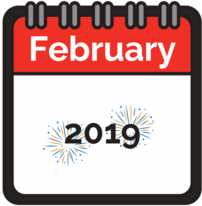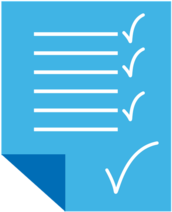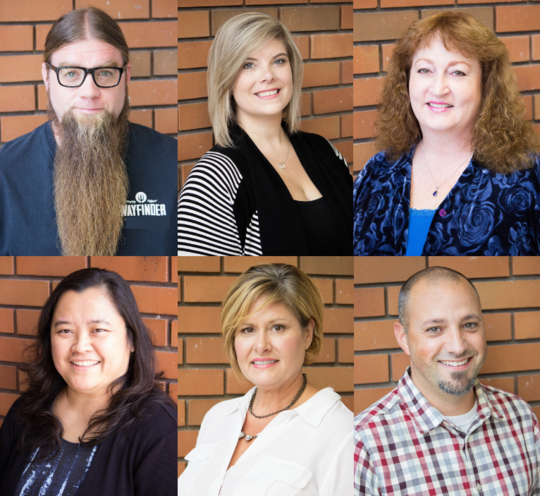December 2018 / January 2019 | Workday Project Newsletter

 New year, new HRIS: Soft launch and full launch dates announced!
By Rocky Way-Clark, Project Management Office, Workday Project
During the Workday Project Steering Committee meeting in December, the project team presented information on work completed through the various project stages thus far. Committee members were presented with information regarding system testing, the recent enterprise-wide Agency Readiness Assessment and what to expect from now until go-live. The general consensus was that the project is prepared to move forward with implementation in February 2019. The committee voted to move the project into the final stages of implementation.
Workday will go live during a "soft launch" for specialized staff, such as human resources and payroll professionals, on February 1, 2019. The system will go live for all employees and job applicants (full launch) on February 11, 2019.
 |
 Have you started your Workday training yet?
By Cecil Owens and Jenn Schierling, Organizational Change Managers, Workday Project
The Workday Project team wants to ensure you are prepared and have all the support you need to navigate our new HR information system. Workday training is being delivered on a "just-in-time" basis, giving users what they need when they need it rather than overloading employees with too much information too early. This type of delivery is ideal because retention is enhanced when learning occurs closer to when the information will actually be used for day-to-day work.
While training will continue to roll out "just-in-time," many Workday training resources are now available for current employees and job applicants. The tools and training currently available on the Workday website include:
-
Job aids – written guides, including system screenshots, that walk users through tasks step-by-step.
-
Quick Reference Guides (QRGs) – also known as "cheat sheets," these are tools that provide just enough to get a job done while you're in the process of completing it.
-
Frequently Asked Questions (FAQs) – where you can find quick answers to key questions.
Other tools and training primarily for specialized security roles and supervisory managers are available by searching "Workday" in iLearnOregon:
-
Quick Reference Videos (QRVs) – screencasts that walk users through tasks step by step. QRVs provide instruction on how to initiate all management processes, including, completing performance reviews, creating job requisitions, promoting an employee and transferring an employee. Some QRVs are prerequisite training for users who must attend instructor-led labs. Please gather questions you have as you complete the QRV course, as you will have the opportunity to ask them in the training lab. You are strongly encouraged to complete this training as soon as possible.
-
Instructor-led labs – optional classroom time intended for those with specialized security roles in HR areas (for example, recruitment, leave management, safety, payroll, family and medical leave, budget, and human capital management). Role-based labs began the week of January 7, 2019. Prior to attending this training, you must complete your role's online QRV course in iLearn.
Additional learning tools that will be available in Workday itself and expand over time include help text (pop-up text on the screen) as well as links to additional materials and resources that will deliver more in-depth context for users.
|
 Are we ready for Workday?
By Anna King, Communications Coordinator, Workday Project
22% of state government employees completed the second round of the Workday Project's Agency Readiness Assessment, which means nearly 9,000 employees weighed in on how prepared they feel for go-live.
Key takeaways
- 35% "agree" and 46% "sometimes agree/sometimes disagree" that [their] agency is "looking forward to the implementation of Workday."
- The highest concentration of “strongly agree” responses belongs to the statement “I am committed to supporting the implementation of Workday" (23%).
- Respondents are torn as to whether or not they “believe their agency leadership and management have clearly communicated the vision and strategy of the Workday Project;" "understand if and how their job roles and daily work activities will be impacted by the implementation of Workday;" and "feel informed about what is happening with the Workday Project."
- 40% "agree" and 32% "sometimes agree/sometimes disagree" that they "would like to receive more frequent communications about the implementation of Workday."
-
Respondents are most aware of the project's email communications, most strongly believe email is an effective means of project communications, and find the project website and newsletter comparable in effectiveness. Twitter, according to respondents, is the least effective project communications channel. Respondents are overwhelmingly more unaware than aware of the project newsletter, blog, Twitter feed, and website.
- Respondents are most excited for how easy Workday is to use; the system's leave management, reporting, and recruitment capabilities; how streamlined and traceable business processes are in Workday; and the access employees will have to their own information. Again, most respondents are not informed enough about Workday to know what to be excited for.
- Although most respondents who do not feel informed enough about Workday fear "nothing" about it, respondents who are familiar with Workday fear the change the new system will bring to their roles and responsibilities; the possibility of increased workloads; inadequate training; impact on payroll; data security; system delays; and glitches.
- When asked to note the "key messages about the Workday Project that still need to be delivered to Oregon state government employees," the most desired messages include training details, Workday's impact on employees and managers, and how jobs and processes may change after implementation. More often than not, respondents note that they are not sure what they need to still hear because they either (1) have never heard of Workday or the Workday Project, or (2) do not know enough about the project to relay what they still need to know. Based on what employees are excited for and fear regarding Workday, it is clear that Workday's successful integration with payroll - but not the replacement of payroll - needs to be reinforced by both the project team and individual agencies.
Survey turnout
The agencies with the highest response rates were Public Employees Retirement System (56% of agency employees), Department of Geology and Mineral Industries (53%), and Teacher Standards and Practices Commission (48%). The top three aggregate turn-outs belong to Department of Human Services (18% of total responses), Department of Transportation (13%) and Department of Corrections (9%). In addition, 37% of judicial employees and 3% of legislative employees completed the survey.
Next steps
Agency Readiness Contacts, Change Leaders, and HR Directors will receive a copy of their agency's results. Survey response analyses will steer project-led and agency-led Workday communications between now and go-live.
The Project Team will release the third and final assessment 30-60 days after go-live.
|
 Get ready for your glamour shot: We're introducing Photo Fridays
By Twyla Lawson, HR Legacy Systems Manager and Business Change Manager, Workday Project
Have you ever wished you could look at a photo of a fellow Oregon state government employee before meeting them in a crowded room for the first time? Or how about when you try to convince a co-worker that they have definitely already met someone from another department even though they just can't put a face to the mystery colleague's name? Workday will make Oregon state government's org charts not only comprehensive and accurate based on real-time data, but they will also contain memory-jogging worker profile photos.
The Workday Project team is hosting "Photo Fridays" at their office building from 10:00 AM to 1:00 PM every Friday from now until Workday's full launch on Monday, February 11. Depending upon their popularity, the project team may extend the sessions or expand the photoshoot window past full launch. In the meantime, check with your Agency Readiness Contact to see whether or not your agency is undertaking a similar photo-taking effort for its employees. "Photo Fridays" are available for any agency who would like to take the project team up on this opportunity. While the system does not require employees to upload photos, we strongly encourage them to take advantage of this valuable Workday feature.
Agencies have been given directions for sending their employees' profile photos to the project team should agencies wish to collect them. For technical and user guidelines, review this handout.
Need proof that we know what we're doing? Our Communications Coordinator, Anna King, doubles as our resident team photographer:
 Original portraits by Anna King, Communications Coordinator, Workday Project
Hyperlinks
- Workday website: https://www.workday.com/en-us/homepage.html
- iLearn Oregon: https://ilearn.oregon.gov/LearnerPage.aspx
- Agency Readiness Contacts: https://www.oregon.gov/das/HR/Documents/Workday%20-%20agency%20readiness%20contacts.pdf
- Change Leaders: https://www.oregon.gov/das/HR/Documents/Workday%20Project%20-%20contacts%20by%20program%20area.pdf
- Employee photo guidelines: https://www.oregon.gov/das/HR/Documents/Workday%20Oregon%20-%20Employee%20photo%20guide.pdf
- Workday Twitter feed: https://twitter.com/workdayoregon
- Workday blog: https://workdayoregon.blog/
For more information about the project, please visit our website. Stay informed by following our Twitter feed and blog!
|